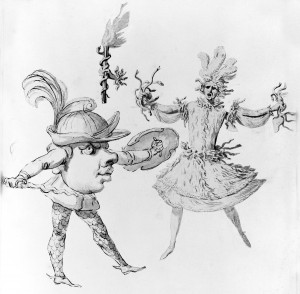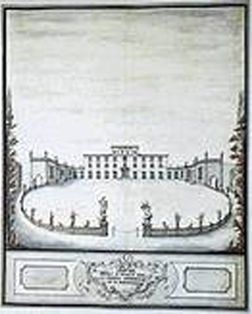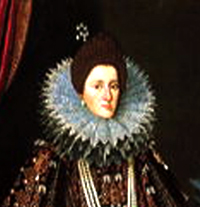The following Synopsis was prepared by Dr. Michael Burden of New College Oxford and is reposted here with permission of the author.
The story centres on Signor Trespolo’s attempts to find a husband for his ward, Artemisia; if she is satisfied, then they will both inherit money under her father’s will.
At the beginning of Act I, Simona is trying to get Despina to agree to a marriage with Trespolo, saying that a husband is like medicine, but Despina says that Trespolo is like a hairy bear, and has no brain. Simona welcomes Nino, who has been away, business unspecified. He inquires the reason for the argument, and, when told that Despina does not want to get married, says that that is only natural, since she is young. Nino then mentions his brother Ciro, who has been driven crazy by love. He sends Simona away with the comment that he will find a way to marry off Despina without shouting. With Simona out of the way, Nino wants to know if Artemisia has ‘relaxed’? Nino is deeply in love with Artemisia who refuses to marry him. Despina says, well, if Artemisia won’t marry him, she won’t, and why is Nino wasting his time on it? Nino asks Despina to be Artemisia’s ‘tutor in love’; she agrees. But as he leaves, Despina tells us that it is Nino she really wants to marry. Artemisia arrives, repressed by her love for Trespolo; she lies down and sleeps. Ciro, quite mad from love, now enters and in his madness, lies down to sleep along side her. Trespolo finds them both asleep. He wakes them, and when the raving Ciro tells them that his name means dog in Persian, Artemisia orders him to leave. Trespolo then broaches the subject of Artemisia’s marriage;the subject is important to him, because under her father’s will, he has to give his permission for the nuptials, but Artemisia has to be satisfied; if she is, then he benefits financially. However, Artemisia will only agree to marry someone she loves, but finds it impossible to utter the name of the one she wishes for her husband, so she passes him a cryptic note before going into the house. Trespolo cannot understand the note at all; it says ‘the one who is here’, and he, Trespolo, is the only one there! However, at that moment, Ciro, the ‘crazy one’, arrives on the scene, and Trespolo leaps to the conclusion that it is Ciro who Artemisia loves. Trespolo is shocked that Artemisia’s beautiful face should be wasted on someone like him. Trespolo asks Ciro if he has thought marrying Artemisia; he is delighted at the idea. Artemisia does not come out to them, so they knock on the door. Trespolo tells Artemisia that he is there with her ‘husband’. When Artemisia realises that it is Ciro who Trespolo means, she is appalled; she rejects him, and departs, followed by Trespolo, leaving Ciro disappointed. In desperation to get her message across, Artemisia now dictates Trespolo a note which repeatedly says ‘It’s you’; he still does not get the message, and when Nino arrives declaring his love, Artemisia makes her escape. Her flight misleads Trespolo; he decides that it is Nino with whom Artemisia is in love, and hands him Artemisia’s note.
Act II starts with Simona trying to teach Ciro proper behaviour and how to court a lady; she persuades him that Artemisia will love him if he makes himself attractive. Trespolo is still in love with Despina; she, however, sarcastically rejects him. They revert to discussing Nino and Artemisia. Despina has brought an open note from Nino to Artemisia (this is a reply to the love letter Artemisia wrote to Trespolo, but which he mistakenly gave to Nino at the end of Act 1). They both criticise the grammar (Nino is clearly a vulgarian) but Trespolo has no glasses and cannot see the text clearly; he reads that Despina has embraced Nino, and bursts into a jealous rage. When Despina gets hold of the letter, it says something quite different, of course. Trespolo apologises, and asks Despina to tell Nino that he now awaits him. As she leaves, Trespolo inquires after Simona; Despina tells him that he is teaching ‘seriousness’ to the crazy one. When Nino appears, Trespolo says he has Nino’s reply to Artemisia’s note, but can’t understand it. Trespolo states that, as he understands it, Nino wants to marry Artemisia. However, as she is Trespolo’s ward, his consent is required for the wedding, and Trespolo will only give it if Nino ‘gives’ him his true love, Despina. Artemisia overhears Trespolo speaking of another love, and hears the discussion on the exchange of ‘wives to be’. She withdraws in shock and distress. Trespolo, knocking on the window, gives Artemisia Nino’s reply. Nino makes love to her, but Artemisia rejects him and tears up the note; she is a lady, and will not be bought as though she were merchandise; she retreats into the house. Nino muses: what has he done to have the fates work against him so? Ciro enters; neither appear to see each other. Both sing of Artemisia, Nino dwelling resentfully on her rejection of his love for her, swearing to hate her, while Ciro sings of her beauty, but how he must say goodbye for a while. [Interval] Artemisia is still unable to utter the name of her beloved; she tells him that the one she loves is the same height as Trespolo, and that he has three syllables to his name. Trespolo agrees to look at a picture of him; she comes back with a mirror, and then leaves to spare her blushes! Trespolo, looking into it, cannot work out of whom the ‘picture’ is, but at that moment, Simona arrives on the scene, and as her image is reflected briefly in the mirror, Trespolo decides that it must be Simona that Artemisia loves. But, he muses, although the number syllables is right – Si-mo-na – why would one woman want to marry another? But it will have to happen, otherwise he will not get Despina; Artemisia must be satisfied.
As Act III opens, Trespolo cannot understand why Simona does not want to marry Artemisia. Simona eventually agrees, scheming to put Ciro in her place. Artemisia arrives, to be greeted by Simona; she tells Artemisia that Trespolo has told her to spare Artemisia’s blushes; he KNOWS – but about Artemisia’s supposed desire for Simona. Believing that Trespolo has AT LAST realised that her love is for him, Artemisia gives Simona a ring for him as a token of affection, and asks her to return with him; she disappears into the house. Simona muses that she never thought she would have to take a wife in her old age, but sees Artemisia’s sterling qualities. Ciro arrives, mad with love; he concludes that love is our medicine, and not our poison. Nino enters, also mad with love. Despina has been talking to Simona; and has discovered the plot to marry her to Trespolo. Trespolo is attempting to persuade Despina to marry him clandestinely; Despina agrees, reluctantly, to meet him there at two o’clock. Simona tells Trespolo that she finds Artemisia so beautiful that she wants to marry her herself, and produces the ring that Artemisia gave her. Ciro arrives in time to overhear the end of the conversation, which arrouses his curiosity. Now sane, he does not know whether to feel sorriest for himself, or his brother, Nino. Despina tells Ciro of the secret plan for her to go to Trespolo at 2am. Ciro is mystified; why all the secrecy? Despina replies that Artemisia does not want them to marry. Artemisia enters to find Trespolo alone; where is Simona, she asks? Artemisia speaks of her love for Trespolo, but is very tired; Trespolo is fed up with waiting, and they go to dinner. Nino and Ciro sing of love; Nino is now completely mad, Ciro now completely sane. Ciro realises that Nino is beyond help, and concentrates on his quest to protect Despina from Trespolo’s advances. Nino sings to himself of the hell of love; he is still obsessed with Artemisia. Artemisia and Trespolo are disturbed by Ciro, banging about; however, they cannot see who it is. Ciro tells Artemisia the truth about Trespolo and his pursuit of Despina; she sees that Trespolo has misled her. In her fury at these revelations, Artemisia accidentally puts out Trespolo’s candle, and he sneaks out to re-light it. In the darkness, Artemisia does not notice that he has left, and continues talking of love as if to Trespolo, but it is Ciro who hears her, and when, much to Artemisia’s surprise, the voice in the dark says that he wants to marry her, she agrees at once. Simona is very confused; Nino is crazy, Ciro is sane, and Despina is not married! She will just have to stay at home and spin. To be loved, you need to be young; but the appetite grows when your teeth fall out. Ciro tells the noisy Trespolo to keep quiet; Artemisia is now his wife. Trespolo is shocked; surely people should not choose their own husbands? Ciro says Artemisia offered to marry him, and he knew a good thing when he saw it! Simona comments that if Artemisia is Ciro’s wife, then she will have a bisexual wife. Artemisia says that her school-girl love for her tutor will now be silent, and she will let her heart change its destiny; thus honour and virtue will be satisfied. Simona reports that Nino is now completely mad; Ciro, recognising that it is only man’s ordered thoughts that separate him from animals, moralises that it is love that is able to make men crazy or wise.
 When, in 1673, Marc-Antoine Charpentier became the principal composer to the King’s Troupe (Troupe du Roy), he became involved in the ongoing struggle between the company’s director and chief playwright, Jean-Baptiste Molière, and the composer Jean-Baptiste Lully. Throughout the 1660s, Molière and Lully had worked closely in providing for the king’s entertainment a series of multi-generic experiments that combined theater, ballet, vocal numbers, choruses, and machine effects. But by the spring of 1672 Lully had decided that his own future lay in opera. Having witnessed the successes of Perrin and Cambert with pastoral opera, Lully set about obtaining the royal opera privilege and, thereafter, a series of draconian decrees designed to protect his monopoly and reduce his musical competition.
When, in 1673, Marc-Antoine Charpentier became the principal composer to the King’s Troupe (Troupe du Roy), he became involved in the ongoing struggle between the company’s director and chief playwright, Jean-Baptiste Molière, and the composer Jean-Baptiste Lully. Throughout the 1660s, Molière and Lully had worked closely in providing for the king’s entertainment a series of multi-generic experiments that combined theater, ballet, vocal numbers, choruses, and machine effects. But by the spring of 1672 Lully had decided that his own future lay in opera. Having witnessed the successes of Perrin and Cambert with pastoral opera, Lully set about obtaining the royal opera privilege and, thereafter, a series of draconian decrees designed to protect his monopoly and reduce his musical competition.





 Isabella Leonarda
Isabella Leonarda
 Early in the century, Monteverdi wrote that he intended to publish a treatise describing the ‘secunda pratica’ or ‘second practice,’ the new compositional attitude that he and his colleagues had adopted. Drawing on Plato, he said that his book would be laid out in three parts and would begin with a chapter on oration. How appropriate that a manifesto of the new music of the 17th century should give such prominence to the rhetorical art, given the dominant motivation that the communication of words and the emotions they express provided composers of the period. Through the experiments that led to the creation of the genres of opera, oratorio, sonata, and cantata, composers sought to integrate drama and music into new compositional approaches that reflected the immediacy and engagement so essential to the art of oratory.
Early in the century, Monteverdi wrote that he intended to publish a treatise describing the ‘secunda pratica’ or ‘second practice,’ the new compositional attitude that he and his colleagues had adopted. Drawing on Plato, he said that his book would be laid out in three parts and would begin with a chapter on oration. How appropriate that a manifesto of the new music of the 17th century should give such prominence to the rhetorical art, given the dominant motivation that the communication of words and the emotions they express provided composers of the period. Through the experiments that led to the creation of the genres of opera, oratorio, sonata, and cantata, composers sought to integrate drama and music into new compositional approaches that reflected the immediacy and engagement so essential to the art of oratory.
 Thus did Heinrich Schütz hope to give the three pieces he composed for the funeral of Prince Heinrich Reuss Posthumus a life beyond their specific commission. Magnificat’s intention in our program is to realize Schütz’s suggestion, and incorporate the three pieces known collectively as the Musikalische Exequien, along with music by Schütz’s musical colleagues, into a Lutheran Mass for the Feast of the Purification, following the liturgical practice of the Dresden Court Chapel of the mid-1630s.
Thus did Heinrich Schütz hope to give the three pieces he composed for the funeral of Prince Heinrich Reuss Posthumus a life beyond their specific commission. Magnificat’s intention in our program is to realize Schütz’s suggestion, and incorporate the three pieces known collectively as the Musikalische Exequien, along with music by Schütz’s musical colleagues, into a Lutheran Mass for the Feast of the Purification, following the liturgical practice of the Dresden Court Chapel of the mid-1630s. Giovanni Antonio Rigatti is a name that until recent times was virtually unknown to music history. Living in Venice in the first half of the 17th-century, he has been overshadowed by his famous contemporaries, the chapel masters and vice chapel masters of St. Mark’s Basilica in Venice: Claudio Monteverdi, Alessandro Grandi, Giovanni Rovetta and Francesco Cavalli. Thanks to the research and publications of an international coterie of scholars, Jerome Roche (England), Linda Maria Koldau (Germany), Metoda Kokole (Slovenia) and Gianluca Viglizzo (Italy), both the biography and music of this fascinating composer of the mid-17th century are at long last coming to light. I am especially grateful to Gianluca Viglizzo for sharing with me his as-yet-unpublished article on Rigatti containing new biographical data. Much of the information below is derived from this article and an earlier one by the late Jerome Roche.
Giovanni Antonio Rigatti is a name that until recent times was virtually unknown to music history. Living in Venice in the first half of the 17th-century, he has been overshadowed by his famous contemporaries, the chapel masters and vice chapel masters of St. Mark’s Basilica in Venice: Claudio Monteverdi, Alessandro Grandi, Giovanni Rovetta and Francesco Cavalli. Thanks to the research and publications of an international coterie of scholars, Jerome Roche (England), Linda Maria Koldau (Germany), Metoda Kokole (Slovenia) and Gianluca Viglizzo (Italy), both the biography and music of this fascinating composer of the mid-17th century are at long last coming to light. I am especially grateful to Gianluca Viglizzo for sharing with me his as-yet-unpublished article on Rigatti containing new biographical data. Much of the information below is derived from this article and an earlier one by the late Jerome Roche.




